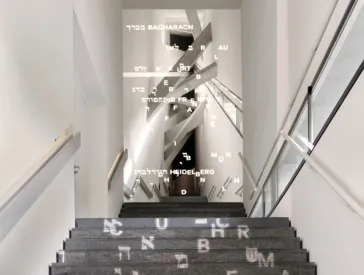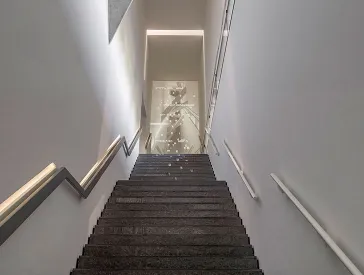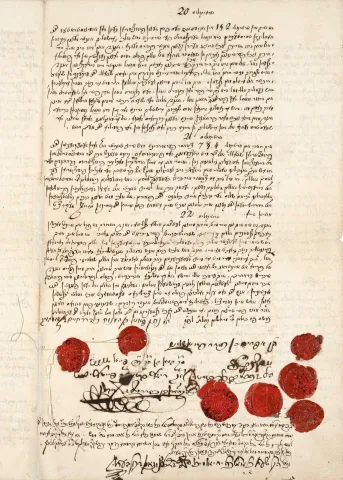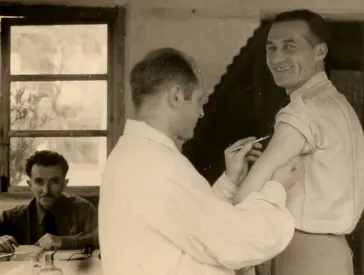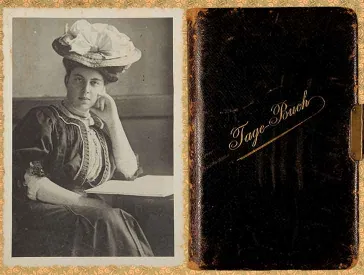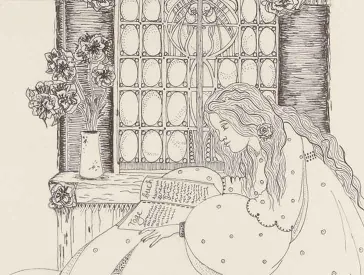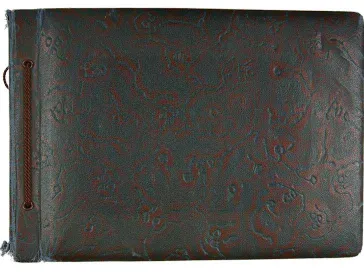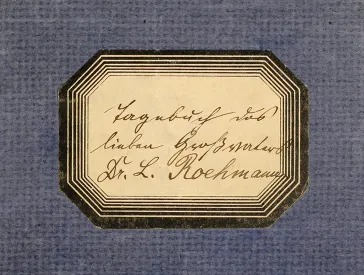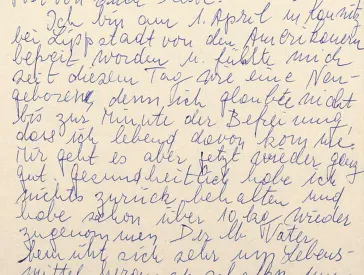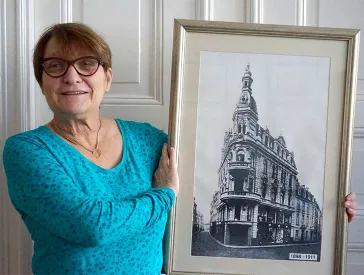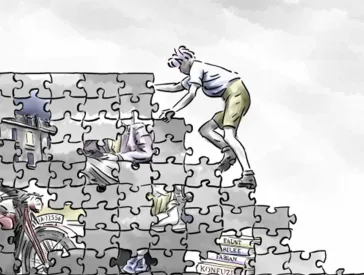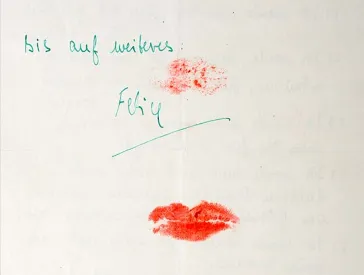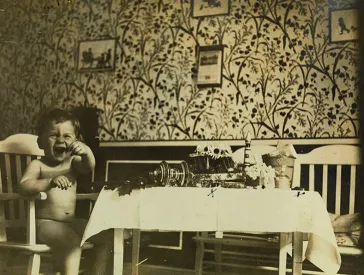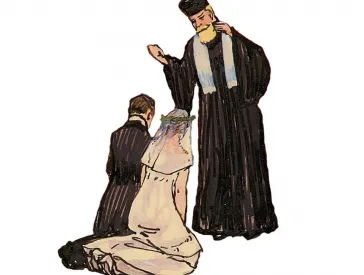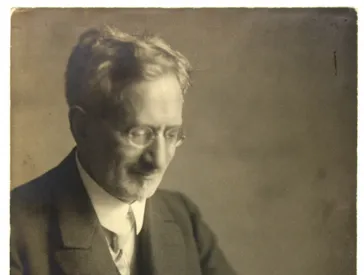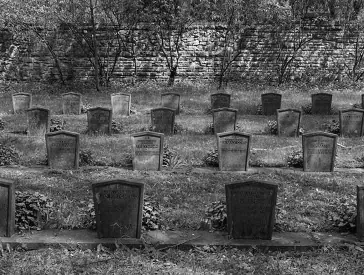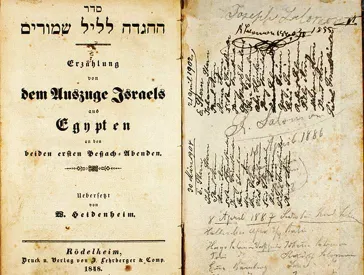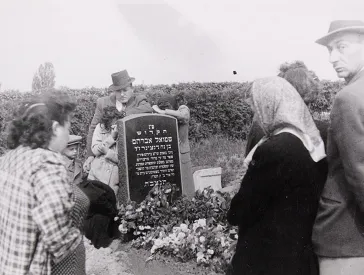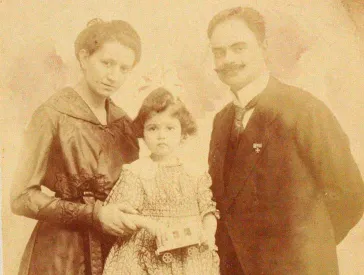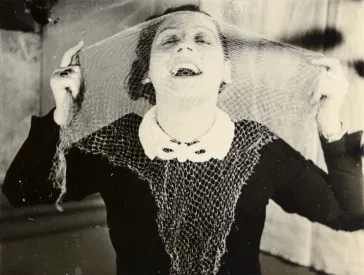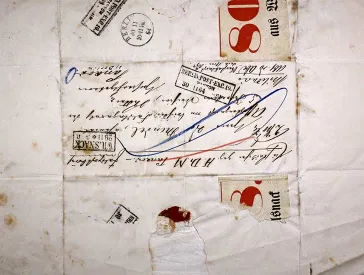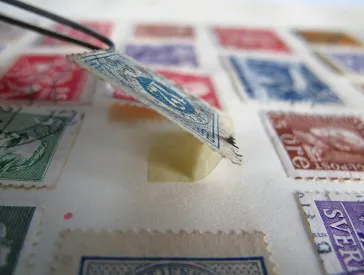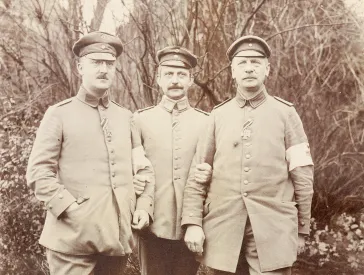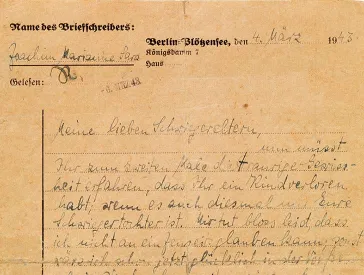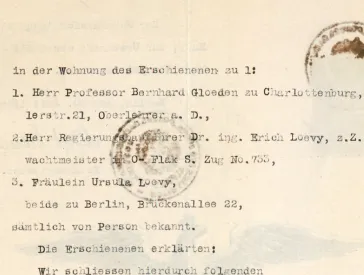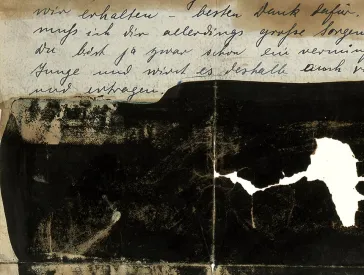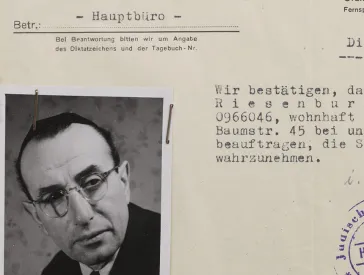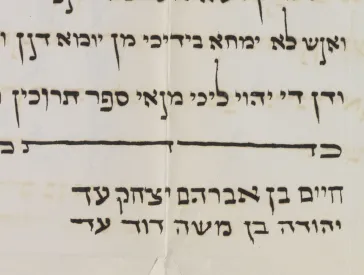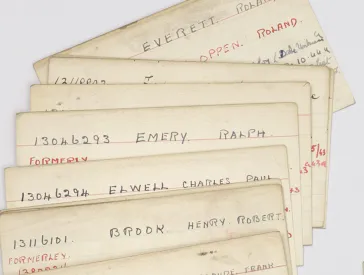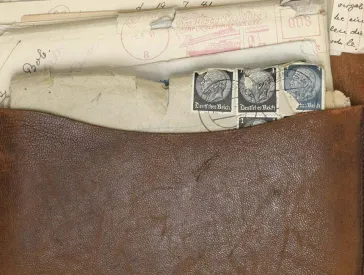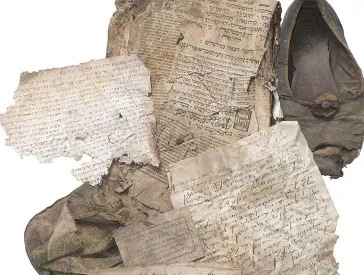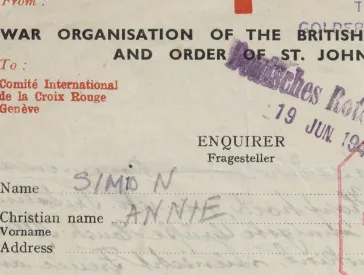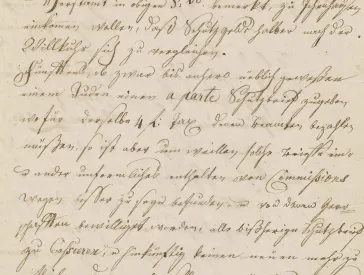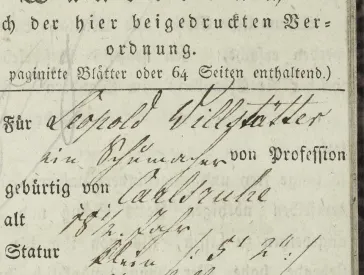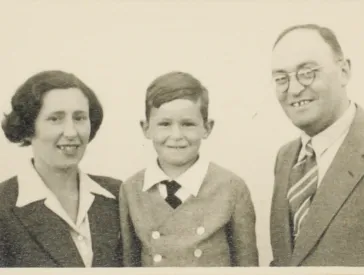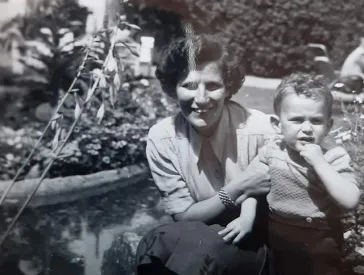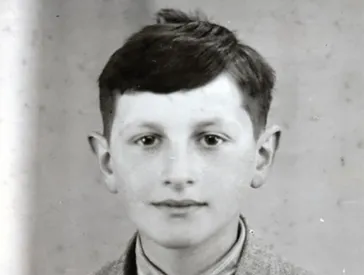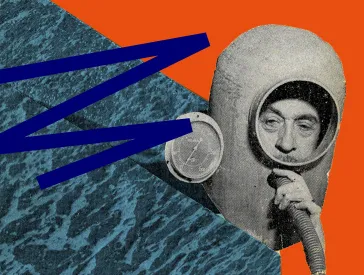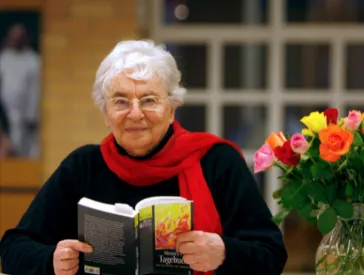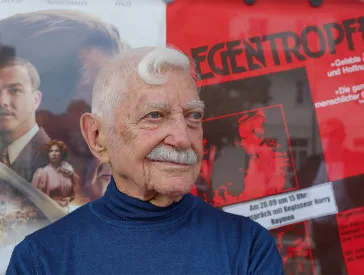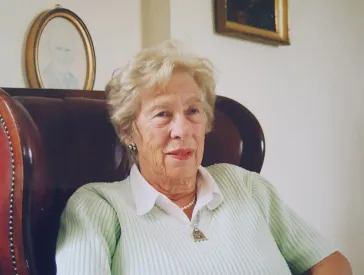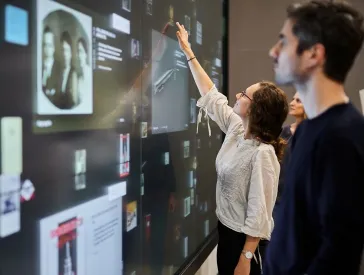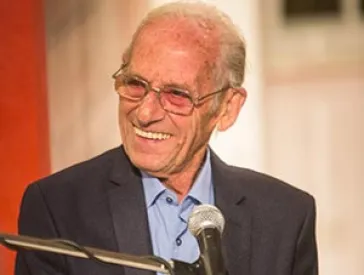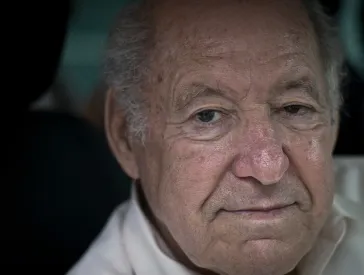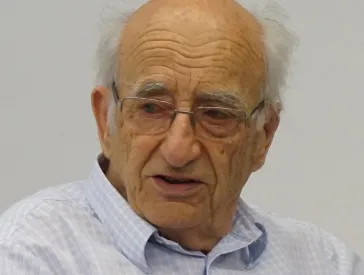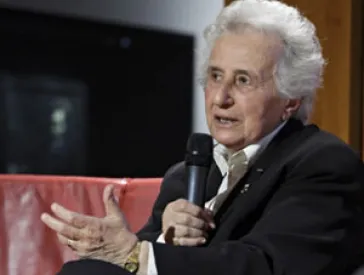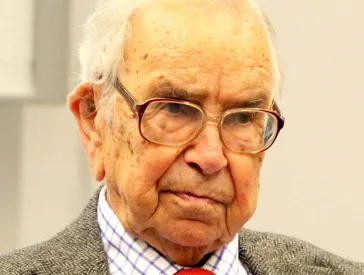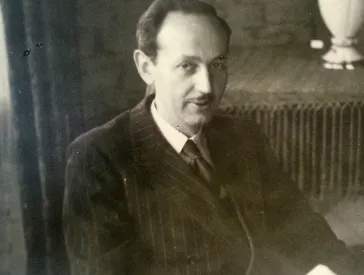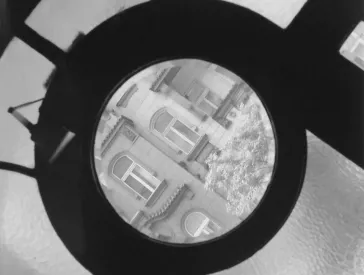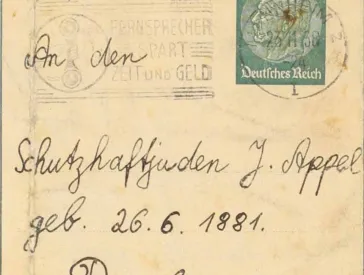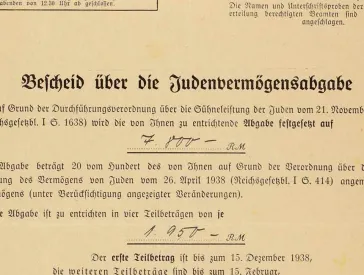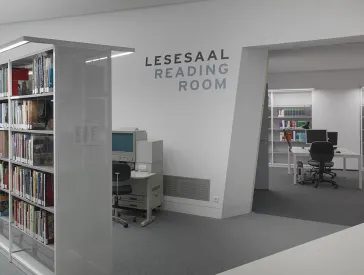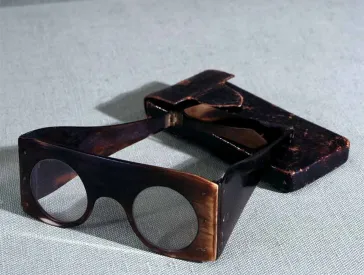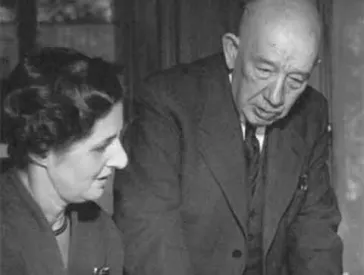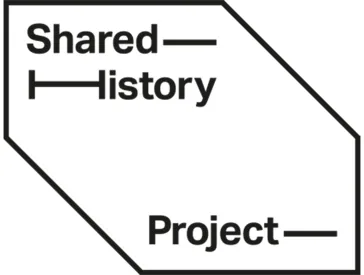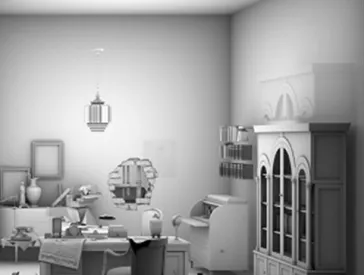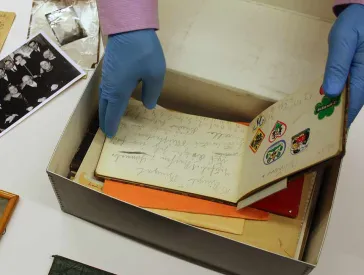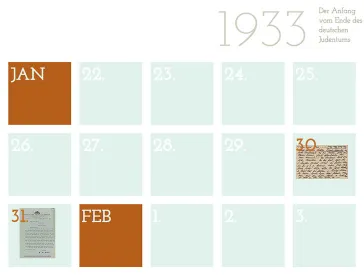
Our Archive
Documentation of Jewish Life
Our Archive is located in the W. Michael Blumenthal Academy, opposite the museum. It safeguards numerous bequests, family collections, and individual documents that permit researchers to draw conclusions about the lives and fates of Jewish families and individuals. We document Jewish history in all its diversity, covering religious, cultural, political, and business life as well as private festivities and personal experiences.
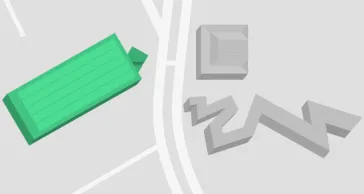
Where
W. M. Blumenthal Academy, Archives
Fromet-und-Moses-Mendelssohn-Platz 1, 10969 Berlin
Postal address: Lindenstraße 9-14, 10969 Berlin
Historical and Geographical Scope
Our holdings include documents from 1623 to the present with an emphasis on the nineteenth and twentieth centuries. The majority of the archival materials come from Berlin, where approximately a third of German Jews lived until the 1930s. However, since our museum opened, we have been able to acquire extensive material documenting Jewish life in other towns and regions in Germany and, in some cases, beyond.
Diverse Documents from Private Donations
Our Archive’s collection is composed almost entirely of private donations. The approximately 1,700 sets of documents range in length from several pages to 40 archival boxes. They include writs of protection and citizenship certificates, wedding and other civil status certificates, documents of military service, of training and professional life, business, scientific, and private correspondence, diaries, and memoirs. Photographs, decorated certificates, souvenirs, and everyday objects from our other collections complement the written materials.
 X
X
Testament of Veitel Heine Ephraim (1703–1775), Berlin 1774; Jewish Museum Berlin, photo: Jens Ziehe
Aubrey Pomerance, head of our archives and curator of the new core exhibition, talks about a family album as a testimony to a close friendship and two diverging life paths; Jewish Museum Berlin 2020. Read more about this family album.
Historical Emphases
We have particularly extensive holdings on middle-class life in the German Empire, on participation in the First World War, and on life and persecution during the Nazi era, encompassing internment, deportation, and murder, but also emigration and reestablishment in exile. A growing number of documents from the postwar period reflects communities' reconstruction and the fresh start, life in Displaced Persons camps, individuals' return from exile, and Jewish life in both parts of Germany and in the reunified country after 1989.
Branches of Other Archives on Our Premises
Our archive also houses a branch of the New York–based Leo Baeck Institute, with more than 4,500 microfilm reels of the institute's holdings available in our Reading room. It is also home to a branch of the Wiener Library with roughly 500 microfilm reels documenting Nazi rule and Nazi crimes.
A Look into our Holdings
All holdings can be viewed by researchers, students, and other interested parties in the Museum's Reading Room on request. (The Reading Room's opening hours and other information on our website).
Please register via the following web form and let us know your preferred date and order preferences:
How can I donate objects, photographs, and documents to the museum?
If you would like to support the Jewish Museum Berlin and believe you possess materials that may be of interest to us, contact us!
How can I conduct research using the museum’s archive, collections, and library?
Our Reading Room is open to the public. You can also research using our library’s holdings and some of our collection’s holdings online. To view additional holdings, please contact the responsible curators.
Can the museum help me research my family history?
You may use our in-house holdings for research purposes. We have also compiled a directory of links to research opportunities for personal and family research and genealogy.
I would like to depict or borrow an object from your collections. Who should I contact?
Your contacts for photo permissions are Valeska Wolfgram and Birgit Maurer-Porat (T +49 (0)30 259 93 433, email: fotodoku@jmberlin.de). Please consider that it may take between four to six weeks Please note that the processing time for requests can take between 4 and 6 weeks. We will be happy to provide you with further information on fees and reproduction conditions on request.
Contact
Aubrey Pomerance
Head of Archives/Leo Baeck Institute
T +49 (0)30 259 93 556
a.pomerance@jmberlin.de
- Address
Jewish Museum Berlin
Lindenstraße 9–14
10969 Berlin
Behind the Scenes: Anecdotes and Exciting Finds while Working with our Collections (22)
Selected Objects: Archive (10)
Event Series: Eyewitness Talks (17)
Online Features: The Background and Ramifications of 9 November 1938 (5)
